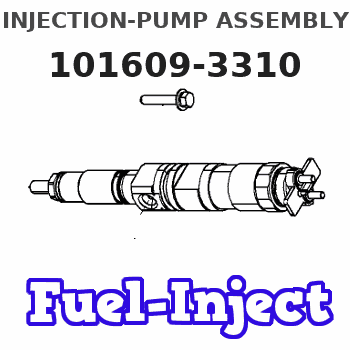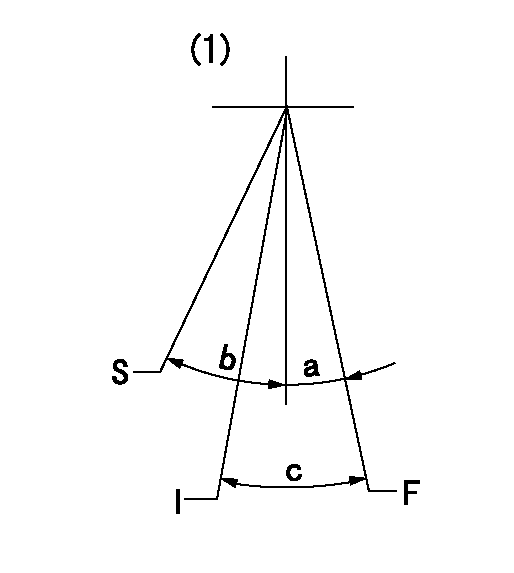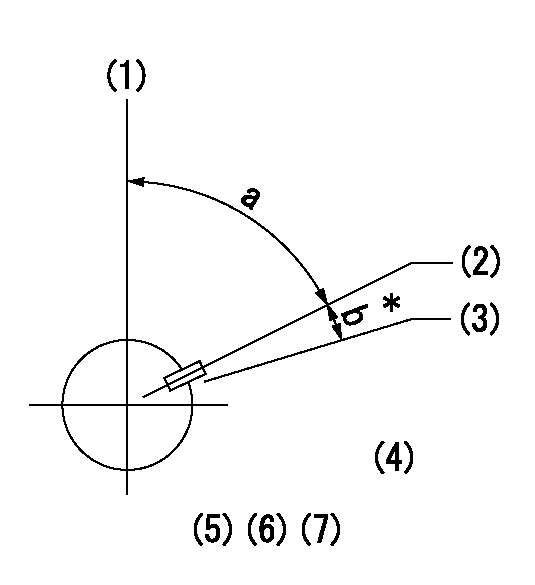Information injection-pump assembly
BOSCH
F 019 Z20 419
f019z20419
ZEXEL
101609-3310
1016093310

Rating:
Service parts 101609-3310 INJECTION-PUMP ASSEMBLY:
1.
_
5.
AUTOM. ADVANCE MECHANIS
6.
COUPLING PLATE
7.
COUPLING PLATE
8.
_
9.
_
10.
NOZZLE AND HOLDER ASSY
11.
Nozzle and Holder
12.
Open Pre:MPa(Kqf/cm2)
21.6{220}
13.
NOZZLE-HOLDER
14.
NOZZLE
15.
NOZZLE SET
Include in #1:
101609-3310
as INJECTION-PUMP ASSEMBLY
Include in #2:
104258-1030
as _
Cross reference number
BOSCH
F 019 Z20 419
f019z20419
ZEXEL
101609-3310
1016093310
Zexel num
Bosch num
Firm num
Name
Calibration Data:
Adjustment conditions
Test oil
1404 Test oil ISO4113 or {SAEJ967d}
1404 Test oil ISO4113 or {SAEJ967d}
Test oil temperature
degC
40
40
45
Nozzle and nozzle holder
105780-8140
Bosch type code
EF8511/9A
Nozzle
105780-0000
Bosch type code
DN12SD12T
Nozzle holder
105780-2080
Bosch type code
EF8511/9
Opening pressure
MPa
17.2
Opening pressure
kgf/cm2
175
Injection pipe
Outer diameter - inner diameter - length (mm) mm 6-2-600
Outer diameter - inner diameter - length (mm) mm 6-2-600
Overflow valve
131424-3420
Overflow valve opening pressure
kPa
255
221
289
Overflow valve opening pressure
kgf/cm2
2.6
2.25
2.95
Tester oil delivery pressure
kPa
157
157
157
Tester oil delivery pressure
kgf/cm2
1.6
1.6
1.6
Direction of rotation (viewed from drive side)
Right R
Right R
Injection timing adjustment
Direction of rotation (viewed from drive side)
Right R
Right R
Injection order
1-5-3-6-
2-4
Pre-stroke
mm
2.5
2.45
2.55
Beginning of injection position
Drive side NO.1
Drive side NO.1
Difference between angles 1
Cal 1-5 deg. 60 59.5 60.5
Cal 1-5 deg. 60 59.5 60.5
Difference between angles 2
Cal 1-3 deg. 120 119.5 120.5
Cal 1-3 deg. 120 119.5 120.5
Difference between angles 3
Cal 1-6 deg. 180 179.5 180.5
Cal 1-6 deg. 180 179.5 180.5
Difference between angles 4
Cyl.1-2 deg. 240 239.5 240.5
Cyl.1-2 deg. 240 239.5 240.5
Difference between angles 5
Cal 1-4 deg. 300 299.5 300.5
Cal 1-4 deg. 300 299.5 300.5
Injection quantity adjustment
Adjusting point
A
Rack position
9.6
Pump speed
r/min
1000
1000
1000
Average injection quantity
mm3/st.
91
90
92
Max. variation between cylinders
%
0
-2.5
2.5
Basic
*
Fixing the lever
*
Injection quantity adjustment_02
Adjusting point
-
Rack position
7.1+-0.5
Pump speed
r/min
500
500
500
Average injection quantity
mm3/st.
15
14
16
Max. variation between cylinders
%
0
-15
15
Fixing the rack
*
Remarks
Adjust only variation between cylinders; adjust governor according to governor specifications.
Adjust only variation between cylinders; adjust governor according to governor specifications.
Injection quantity adjustment_03
Adjusting point
D
Rack position
-
Pump speed
r/min
100
100
100
Average injection quantity
mm3/st.
70
70
80
Fixing the lever
*
Rack limit
*
Test data Ex:
Governor adjustment

N:Pump speed
R:Rack position (mm)
(1)Target notch: K
(2)Tolerance for racks not indicated: +-0.05mm.
(3)The torque control spring does not operate.
(4)Adjust the secondary timing before adjusting the governor.
(5)RACK LIMIT
----------
K=14
----------
----------
K=14
----------
Speed control lever angle

F:Full speed
I:Idle
S:Speed
(1)Use the center of the hole at R = aa
----------
aa=77mm
----------
a=18deg+-3deg b=32deg+-3deg c=33deg+-5deg
----------
aa=77mm
----------
a=18deg+-3deg b=32deg+-3deg c=33deg+-5deg
Timing setting

(1)Pump vertical direction
(2)Key groove position at No. 1 cylinder's beginning of injection position (at BTDC: aa).
(3)Position of the key groove of the No. 1 cylinder at B.T.D.C. bb (fix the governor flyweight at this position for delivery).
(4)B.T.D.C.: aa
(5)At second timing adjustment, set the camshaft at the * position and tighten the flyweight locknut.
(6)Align the flyweight's timing gear position with the lockpin groove and then fully tighten the flyweight to the camshaft.
(7)Remove the lock pin and adjust the governor. Reinstall the lock pin to fix the flyweight for delivery.
----------
aa=17deg bb=0deg
----------
a=54deg54min+-3deg b=8deg30min+-30min
----------
aa=17deg bb=0deg
----------
a=54deg54min+-3deg b=8deg30min+-30min
Information:
Turbocharger
Turbocharger
(1) Turbine wheel. (2) Compressor wheel. (3) Exhaust outlet. (4) Air inlet. (8) Oil inlet passage. (9) Oil outlet. (10) Exhaust inlet.The turbocharger is installed on the exhaust manifold. All the exhaust gases from the engine go through the turbocharger.The exhaust gases enter exhaust inlet (10) and go through the blades of turbine wheel (1), causing the turbine wheel and compressor wheel (2) to turn.When the compressor wheel turns, it pulls filtered air from the air cleaner through air inlet (4). The air is put in compression by action of the compressor wheel and is pushed to the inlet manifold of the engine.When engine load increases, more fuel is injected into the engine cylinders. The volume of exhaust gas increases, which causes the turbocharger turbine wheel and compressor wheel to turn faster. The increased rpm of the compressor wheel increases the quantity of inlet air. As the turbocharger provides additional inlet air, more fuel can be burned. This results in more horsepower from the engine at higher altitudes.Maximum rpm of the turbocharger is controlled by the high idle speed setting and the height above sea level at which the engine is operated.The bearings for the turbocharger use engine oil for lubrication. The oil comes in through oil inlet (8) and goes through passages in the center section for lubrication of the bearings. Oil from the turbocharger goes out through oil outlet (9) in the bottom of the center section and goes back to the engine oil pan.The turbocharger allows the engine to run properly at high altitudes where the air is leaner. In this application, the turbocharger does not give more power. It compensates for leaner air.Crankcase Ventilation System
The air intake system is also equipped with a crankcase ventilation system, or breather. The piston intake stroke pulls in atmospheric air to the crankcase area.
Crankcase Ventilation
(1) Ventilation hose. (2) Breather.The fumes in the crankcase flow through a passage of the engine block to the valve cover, through hose (1) and breather (2) to the atmosphere.Electrical System
The electrical system is a 12 volt, negative ground system that has two basic circuits. They are the starting circuit and the charging circuit, which includes the low amperage circuit with warning lights and gauges. Some of the electrical components are used in more than one circuit.The starting circuit is in operation only when the key start switch is turned to the START position. In the starting circuit, the transmission neutral/switch must be closed before the starter solenoid is energized (electrical energy).The charging circuit is in operation when the engine is running. The alternator in the charging circuit gives current to the electrical system. The battery keeps the storage of the current. A voltage regulator in the circuit, on the alternator housing, controls the amount of current output to the battery. The voltmeter in the circuit shows system voltage.Reference: For a complete electrical schematic, see Schematics For Backhoe Loader Electrical System, Form No. SENR3165; Backhoe Loader Electrical System (With Roading Arrangement), Form No. SENR3924;
Turbocharger
(1) Turbine wheel. (2) Compressor wheel. (3) Exhaust outlet. (4) Air inlet. (8) Oil inlet passage. (9) Oil outlet. (10) Exhaust inlet.The turbocharger is installed on the exhaust manifold. All the exhaust gases from the engine go through the turbocharger.The exhaust gases enter exhaust inlet (10) and go through the blades of turbine wheel (1), causing the turbine wheel and compressor wheel (2) to turn.When the compressor wheel turns, it pulls filtered air from the air cleaner through air inlet (4). The air is put in compression by action of the compressor wheel and is pushed to the inlet manifold of the engine.When engine load increases, more fuel is injected into the engine cylinders. The volume of exhaust gas increases, which causes the turbocharger turbine wheel and compressor wheel to turn faster. The increased rpm of the compressor wheel increases the quantity of inlet air. As the turbocharger provides additional inlet air, more fuel can be burned. This results in more horsepower from the engine at higher altitudes.Maximum rpm of the turbocharger is controlled by the high idle speed setting and the height above sea level at which the engine is operated.The bearings for the turbocharger use engine oil for lubrication. The oil comes in through oil inlet (8) and goes through passages in the center section for lubrication of the bearings. Oil from the turbocharger goes out through oil outlet (9) in the bottom of the center section and goes back to the engine oil pan.The turbocharger allows the engine to run properly at high altitudes where the air is leaner. In this application, the turbocharger does not give more power. It compensates for leaner air.Crankcase Ventilation System
The air intake system is also equipped with a crankcase ventilation system, or breather. The piston intake stroke pulls in atmospheric air to the crankcase area.
Crankcase Ventilation
(1) Ventilation hose. (2) Breather.The fumes in the crankcase flow through a passage of the engine block to the valve cover, through hose (1) and breather (2) to the atmosphere.Electrical System
The electrical system is a 12 volt, negative ground system that has two basic circuits. They are the starting circuit and the charging circuit, which includes the low amperage circuit with warning lights and gauges. Some of the electrical components are used in more than one circuit.The starting circuit is in operation only when the key start switch is turned to the START position. In the starting circuit, the transmission neutral/switch must be closed before the starter solenoid is energized (electrical energy).The charging circuit is in operation when the engine is running. The alternator in the charging circuit gives current to the electrical system. The battery keeps the storage of the current. A voltage regulator in the circuit, on the alternator housing, controls the amount of current output to the battery. The voltmeter in the circuit shows system voltage.Reference: For a complete electrical schematic, see Schematics For Backhoe Loader Electrical System, Form No. SENR3165; Backhoe Loader Electrical System (With Roading Arrangement), Form No. SENR3924;

